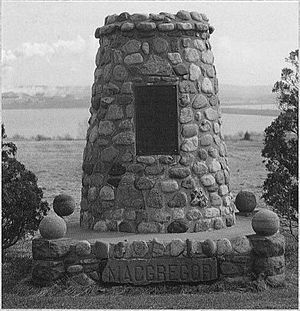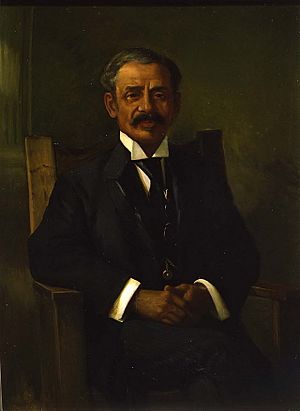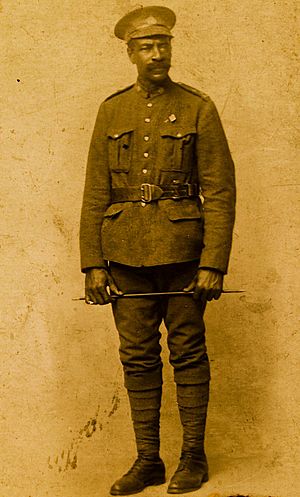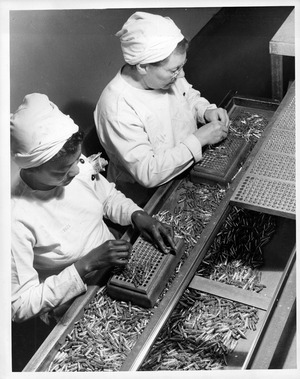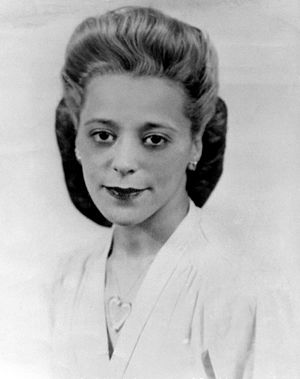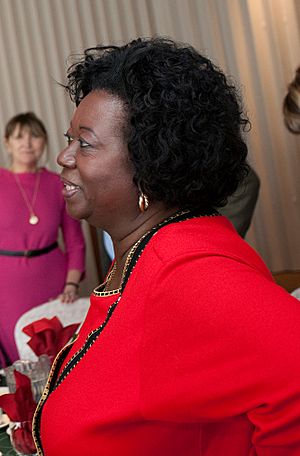Black Canadians facts for kids
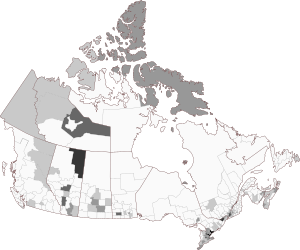
Black Canadians as percent of population by census division
|
|
| Total population | |
|---|---|
| 1,547,870 (total, 2021) 4.26% of total Canadian population 749,155 Caribbean Canadians 2.2% of total Canadian population 2016 Census |
|
| Regions with significant populations | |
| Toronto, Montreal, Brampton, Ajax, Edmonton, Calgary, Ottawa | |
| Ontario | 768,740 (5.5%) |
| Quebec | 422,405 (5.1%) |
| Alberta | 177,940 (4.3%) |
| British Columbia | 61,760 (1.3%) |
| Manitoba | 46,485 (3.6%) |
| Nova Scotia | 28,220 (3.0%) |
| Languages | |
| Canadian English • Canadian French • African Nova Scotian English • Caribbean English • Haitian Creole • African languages | |
| Religion | |
| 69.1% Christianity, 11.9% Islam, 18.2% Irreligiosity, 0.8% other faiths | |
| Related ethnic groups | |
| Afro-Caribbeans • African Americans | |
Black Canadians are people of African descent who live in Canada. Most Black Canadians have roots in the Caribbean. Others come from Africa or are descendants of African Americans.
Some Black Canadians prefer to be called "African Canadian." This term is used by those whose ancestors were brought to North America as enslaved people. Many of these ancestors were promised freedom by the British during the American Revolutionary War. Thousands of these "Black Loyalists" settled in Canada. Also, many enslaved people escaped to Canada from the United States using the Underground Railroad.
However, many Black people from the Caribbean prefer "Caribbean Canadian." They feel this name better shows their unique heritage. Because of these different backgrounds, "Black Canadian" is a widely accepted term in Canada.
Black Canadians have made many important contributions to Canadian culture. Many Black Canadians have held high public offices. These include Michaëlle Jean, who was the Governor General of Canada. Black Canadians are the third-largest visible minority group in Canada.
Contents
- History of Black Canadians
- First Black People in Canada
- Black Loyalists and the American Revolution
- Maroons from the Caribbean
- Ending Slavery in Canada
- War of 1812 and Freedom
- The Underground Railroad
- Late 1800s: Community and Challenges
- Early 1900s: Immigration and War
- Mid-1900s: World War II and Civil Rights
- Late 1900s: Political Progress
- Images for kids
- See also
History of Black Canadians
The story of Black people in Canada is mostly about people choosing to move here. Whether they were descendants of Black Loyalists, former American slaves, or recent immigrants from the Caribbean or Africa, they all chose to make Canada their home.
First Black People in Canada
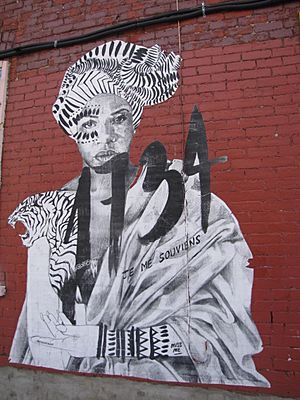
The first Black person recorded in Canada was likely an unnamed man in 1606. He was on a ship headed for Port-Royal and died during the journey. The first recorded free Black person to step on Canadian land was Mathieu da Costa. He arrived in Nova Scotia between 1603 and 1608. He worked as a translator for French explorers.
The first known Black person to live in what became Canada was Olivier Le Jeune. He was an enslaved boy from Madagascar. He was later freed before he died in 1654.
Black people arrived in Canada in different waves. Some came as free people serving in the French military. Others were enslaved or worked as indentured servants. About 1,000 enslaved people were brought to New France in the 1600s and 1700s. By 1759, about 1,132 Black enslaved people lived in New France. Most of them lived in Montreal. They often worked in homes for wealthy owners.
When the British took over New France in 1763, they allowed French colonists to keep their enslaved people. However, slavery became less popular over time. By 1829, Canadian law did not recognize slavery. This meant that any enslaved person who came to Canada became free. In 1833, Britain officially outlawed slavery across its entire empire.
Black Loyalists and the American Revolution
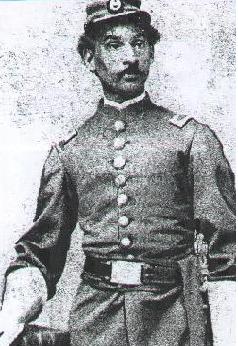
During the American Revolution, many people loyal to the British Crown moved north to Canada. These were called United Empire Loyalists. Some white Loyalists brought enslaved Black people with them. But the British also promised freedom and land to enslaved people who left rebel masters and joined them. About 3,000 of these freed Black people were moved to Nova Scotia.
These Black Loyalists, many of whom were merchants and labourers, settled in places like Birchtown. However, they often faced unfair treatment from white settlers. In 1785, the city of Saint John even changed its rules to stop Black people from working in certain trades.
In 1782, a conflict happened in Shelburne. White veterans attacked Black American settlers who were getting jobs. Because of the difficulties and discrimination, 1,192 Black Loyalists left Nova Scotia in 1792. They moved to Sierra Leone in West Africa, where they helped found Freetown.
Maroons from the Caribbean
In 1796, 543 Jamaican Maroons were sent from Jamaica to Nova Scotia. They had fought against the British government. Halifax was growing at the time, and there was a need for workers. The Maroons were put to work on building projects in the city.
The Jamaican government provided money to help the Maroons settle. They bought land for them in Preston, Nova Scotia. But the land was not good for farming, and the climate was too cold for their usual crops like bananas. Many Maroons were unhappy.
In 1800, the Maroons left Halifax and sailed to Freetown, Sierra Leone. There, they helped put down an uprising among other Black settlers.
Ending Slavery in Canada
Keeping enslaved people in Canada was not as profitable as in the southern United States. This was because of the colder climate. In 1772, Britain began to outlaw the slave trade. This influenced colonies like Nova Scotia.
In 1788, James Drummond MacGregor published the first anti-slavery writings in Canada. He also bought the freedom of enslaved people. In Nova Scotia, judges like Thomas Andrew Lumisden Strange and Sampson Salter Blowers helped free enslaved people.
In 1793, John Graves Simcoe, the first leader of Upper Canada, tried to end slavery. A new law was passed that year. It said that anyone born to an enslaved woman after that date would be freed at age 25. By 1800, slavery was almost gone in other British North American colonies. The British Empire outlawed the slave trade in 1807. Then, in 1833, the Slavery Abolition Act made slave-holding illegal everywhere in the British Empire, except India. This made Canada a safe place for enslaved people fleeing the United States.
War of 1812 and Freedom
Another large group of Black people came to Canada between 1813 and 1815. These were refugees from the War of 1812. They came mainly from the United States, seeking freedom. A British announcement in 1814 promised freedom and land to Black Americans. About 3,500 Black Americans came to Canada by 1818. They settled in places like Hammonds Plains and North Preston.
Life was hard at first due to poor land and economic problems. However, Black Canadians showed strong loyalty to Britain for granting them freedom. Many joined the militia to defend Canada. A Black Loyalist named Richard Pierpoint offered to form a Black military unit. This "Coloured Corps" fought bravely in battles like Queenston Heights.
The Underground Railroad
Many Black Canadians in Nova Scotia and Southern Ontario are descendants of enslaved African Americans. These ancestors escaped from the United States using the Underground Railroad. This was a secret network of safe houses and routes. From the late 1820s until the American Civil War began in 1861, tens of thousands of enslaved people found freedom in Canada through this network.
Late 1800s: Community and Challenges
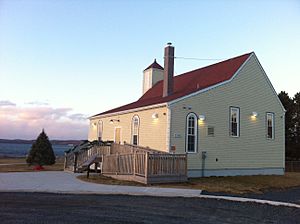
Unlike the United States, Canada did not have federal "Jim Crow" laws that forced racial segregation. However, local prejudices often led to segregation in schools, businesses, and housing. For example, in Nova Scotia, the Education Act of 1865 allowed school boards to separate Black and white children.
Despite this, Black communities in the late 1800s were very strong. Places like Africville in Halifax were close-knit. Africville had its own school, store, post office, and church. Black community leaders often became teachers, providing a supportive learning environment for children. Black Canadians showed pride in their heritage. For example, a meeting hall in Halifax was named Menelik Hall after an Ethiopian emperor who defeated a European army.
Early 1900s: Immigration and War
In the early 1900s, Canada had unofficial rules that limited Black immigration. Few Black people came to Canada during this time, as most immigrants were from Europe.
During the First World War, Black volunteers were at first turned away from the Canadian army. But later, some were accepted. From 1916, Black Canadians were mainly assigned to construction units to dig trenches. Reverend William White became one of the few Black officers in the Canadian Expeditionary Force.
In the 1920s, more Black people from the Caribbean came to Canada. Many worked in steel mills in Cape Breton. Others became railway porters, especially from the United States. They settled in major cities like Montreal, Toronto, and Vancouver. These railway jobs were seen as good, steady work.
Mid-1900s: World War II and Civil Rights
In the Second World War, Black volunteers were initially refused by the armed forces. But by 1940, the Canadian Army began accepting them. Unlike World War I, there were no separate Black units. Black Canadians served in integrated units. The Royal Canadian Navy and Air Force also began accepting Black members. For example, the five Carty brothers from New Brunswick all joined the Air Force. Gerald Carty, the youngest, flew 35 bombing missions over Germany.
The war created new job opportunities for Black men and women in factories. This helped many Black women find well-paying jobs for the first time.
After the war, the fight for civil rights grew. In 1944, Ontario passed a law against racial discrimination in businesses. In 1946, Viola Desmond, a Black woman from Halifax, was arrested for sitting in the "whites-only" section of a movie theatre in Nova Scotia. She was fined for a small tax difference. Her case gained a lot of attention. It led to civil rights groups pushing for change.
As a result, Nova Scotia passed laws in the 1950s to end segregation. Ontario also passed laws in 1951 and 1955 to outlaw racial discrimination in jobs and housing. In 1958, Ontario created the Anti-Discrimination Commission to investigate cases of unfair treatment. Other provinces like Manitoba, New Brunswick, Saskatchewan, British Columbia, and Quebec followed with similar laws.
The town of Dresden, Ontario was known for segregation. Hugh Burnett, a Black World War II veteran, started the National Unity Association in 1948 to fight this. He worked with Kalmen Kaplansky to highlight the unfairness. Their efforts led to stronger anti-discrimination laws in Ontario. By 1956, Black customers were finally served in places like Kay's Grill in Dresden.
Late 1900s: Political Progress
Starting in the 1960s, Black Canadians became more active in politics. In 1963, Leonard Braithwaite became the first Black person elected to a provincial legislature in Ontario. In 1968, Lincoln Alexander became the first Black person elected to the House of Commons. He later became the first Black federal Cabinet minister in 1979.
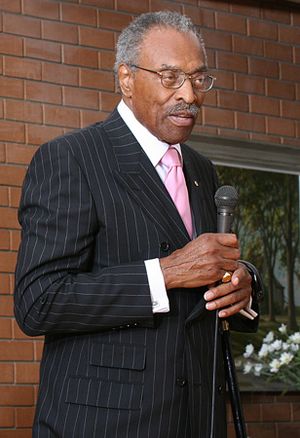
In the 1980s and 1990s, more Black Canadians achieved political milestones. Howard McCurdy became the second Black Member of Parliament in 1984. Anne Cools became the first Black Senator. Alvin Curling became the first Black person to serve in an Ontario provincial cabinet.
In 1990, Zanana Akande became the first Black female member of provincial parliament in Ontario and the first Black woman in a provincial cabinet. Donald Oliver became the first Black man appointed to the Senate. In 1993, Wayne Adams became the first Black person elected to the Nova Scotia legislature and a cabinet minister there. Also in 1993, Jean Augustine became the first Black woman elected to the House of Commons.
Images for kids
-
Mathieu da Costa, the first recorded free black person to arrive in the land that would become Canada centuries later
See also
 In Spanish: Afrocanadiense para niños
In Spanish: Afrocanadiense para niños


